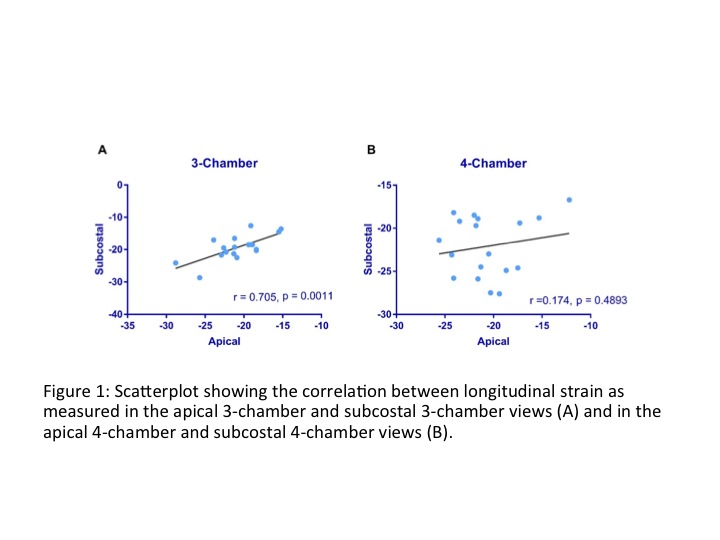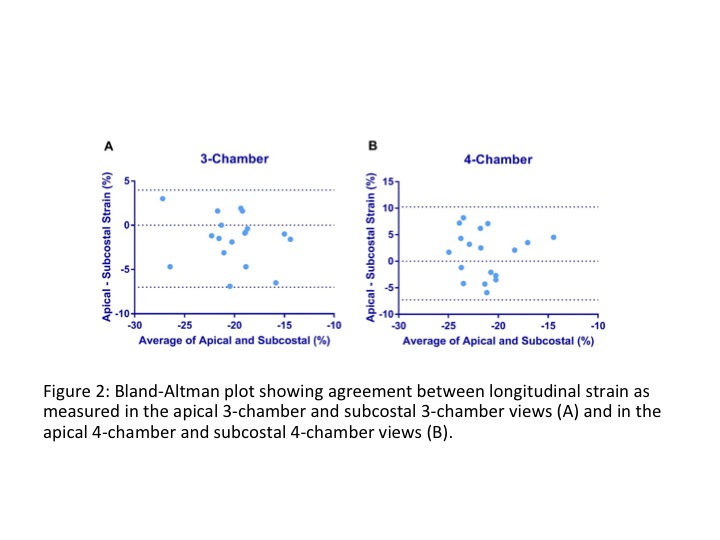Presenting Author:
Sarah Chuzi, M.D.
Principal Investigator:
Nausheen Akhter, M.D.
Department:
Medicine
Keywords:
strain echocardiography, cardio-oncology, longitudinal strain, breast cancer, cardiotoxicity
Location:
Ryan Family Atrium, Robert H. Lurie Medical Research Center
C35 - Clinical Women's Health Research
Subcostal Strain in Breast Cancer Patients: Feasibility and Novel Clinical Utility
Background: Strain imaging is becoming an important clinical tool in breast oncology. However, image quality and therefore the ability to accurately measure strain are often limited in this patient group due to breast reconstruction surgery, tissue expanders, and/or implants. The aim of this study was to evaluate the feasibility of measuring 3-chamber (3C) and 4-chamber (4C) longitudinal strain (LS) from the subcostal window in women patients with breast cancer. Methods: 19 patients with breast cancer at various stages of chemotherapy treatment were analyzed. 1 patient was excluded from final analysis due to inadequate subcostal 3C view. The feasibility of LS measurements in the apical and subcostal 3C and 4C views was evaluated, and correlation between measurements was calculated using intraclass correlation coefficients. Bland-Altman analysis was used to evaluate the agreement between LS measurements in the apical and subcostal views. Results: All patients had adequate 4C subcostal views and 18/19 (95%) patients had adequate 3C subcostal views. Mean apical and subcostal 3C LS were -20.8% and -19.3% respectively. Mean apical and subcostal 4C LS were -20.6% and -22.1%, respectively. A strong correlation between LS measurements obtained from the apical and subcostal 3C views was observed (r = 0.71, p = 0.0011) (Figure 1A). However, apical and subcostal 4C measurements were not correlated (r = 0.17, p = 0.49) (Figure 1B). Bland Altman analysis showed good agreement between measurements in apical and subcostal 3C and 4C views (Figure 2). Segment by segment analysis also showed good agreement for all but 3 segments (basal inferolateral, mid anteroseptal, and apical inferoseptal). Conclusion: The subcostal view provides a novel alternative for trending LS in patients with breast cancer. Our study shows that 3C and 4C LS can be reliably measured in most patients, with good agreement with apical LS values. Subcostal strain may be a valuable tool for cardiac surveillance in patients with challenging apical windows due to breast surgery.


